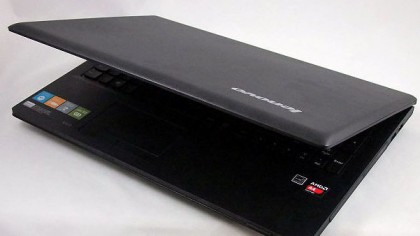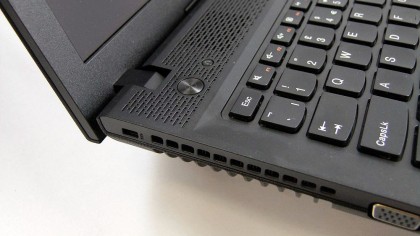Why you can trust TechRadar
The specification for the Lenovo G505 reads like it will produce a quality experience. It may lack some of the thrills of more expensive systems, but this isn't an out-and-out budget offering, and so there are some worthwhile inclusions here that you may not have thought possible at the price.

As a case in point, there are plenty of smaller hard drives available for budget machines, but Lenovo has elected to install a 1TB drive inside the chassis. This gives you plenty of room for both work and play. Admittedly it is only a 5,400rpm model, but given that 7,200rpm 2.5-inch drives have all but disappeared, it's a reasonable enough inclusion which shows that Lenovo isn't just building to the tightest budget possible. It has also squeezed an optical drive into the chassis, which gives you more options over many Ultrabooks.
What of the processor? At this price point Intel's chips are out of reach, but this does give AMD a chance to shine. And it has been seeing some success in budget machines recently, with the aforementioned Samsung ATIV Book 9 Lite using one of AMD's latest chips. Lenovo has turned to a slightly lower member of its advanced processing unit (APU) range here, although it is one of the newer 'Jaguar' APUs - specifically the A4-5000. This is the same fundamental architecture that can be found inside the PS4and Xbox One, although to be fair, in this mobile form, this APU is more about power efficiency rather than trying to set the standard for next-generation gaming.

This APU boasts a maximum operating thermal design power (TDP) of 14 Watts, which is certainly low compared to normal mobile CPUs, and helps the G505 manage an overall battery life when playing back videos of just over four hours. There is a downside here though. The performance offered by this quad-core chip isn't going to set the world on fire - with a maximum core speed of just 1,500MHz, it doesn't pack the kind of punch that we're used to. It's no Haswell CPU, and this is proved in the benchmarks, with Cinebench and X264 both trailing Intel's Core i3 processors.
As this is an APU, it's also responsible for the graphics subsystem. AMD officially calls the GPU side of things a Radeon HD 8330, but don't be fooled too much by the seemingly cutting-edge naming convention. This is very much a low-impact subsystem, with just 128 unified shaders. It is at least based on the GCN architecture, but without the raw silicon behind it, it just can't produce the kind of performance you would want for games – even at the lowest settings it feels jerky. It's fine for work though, and handles the demands of the 1366 x 768 resolution screen well, even if the screen itself is rather lacklustre due to its poor viewing angles.

Sign up to the TechRadar Pro newsletter to get all the top news, opinion, features and guidance your business needs to succeed!
